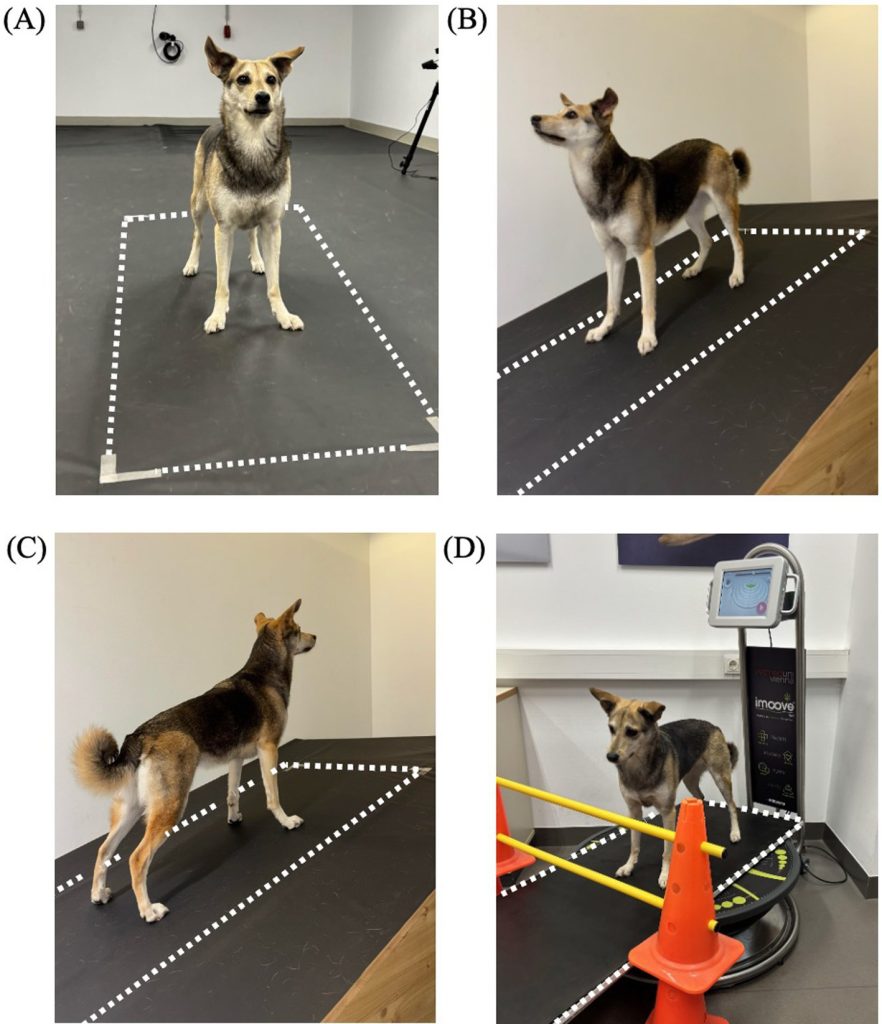How Animal Age Influences the Behavioral Training Process

Understanding the Impact of Age on Animal Training
Animals, much like humans, undergo significant changes as they age, affecting their behavior and responsiveness to training techniques. Recognizing these age-related factors is crucial for effective behavioral training, as it can mean the difference between success and frustration for both trainers and the animals in their care.
Developmental Stages
The training needs and abilities of an animal can vary greatly across different developmental stages. For instance, puppies and kittens are often in a critical period for socialization. During this time, they are more open to new experiences, making it an optimal time for exposing them to various environments, people, and other animals. Conversely, adult animals may have already formed specific behavioral patterns which can be more challenging to modify. For example, a five-year-old dog that has never been socialized may exhibit fearful or aggressive behavior towards new stimuli, making rehabilitation a more complex process.
Attention Span
Younger animals tend to have shorter attention spans compared to their older counterparts. A rambunctious puppy may only focus on a training command for a few moments before their curiosity leads them towards exploring their surroundings. Therefore, trainers often need to employ shorter training sessions filled with engaging activities to maintain their interest. Incorporating games or using toys as rewards can be effective strategies. In summary, understanding that a younger animal’s fleeting attention must be catered for with quick, dynamic training sessions lays the groundwork for successful learning.
Memory Retention
As animals age, their memory retention can change significantly. Older animals may have a wealth of experiences which can aid in learning new commands or behavior patterns. For example, a senior dog might learn new tricks using an established understanding of previous commands, leveraging their experience. However, it’s equally important to note that older animals can develop ingrained habits that are harder to change. A cat that has been allowed to jump on kitchen counters for years may resist attempts to discourage this behavior as they age, creating additional challenges for trainers.
Physical Condition
Age can also affect an animal’s physical condition, which in turn impacts their training capabilities. Younger animals typically possess high energy levels and physical agility, making them more receptive to physically demanding activities. However, geriatric animals may show signs of arthritis or decreased stamina, requiring trainers to adjust their expectations and training techniques accordingly. Consider a 10-year-old Golden Retriever who may not be able to perform as many long-distance fetches as a younger companion. In such cases, focusing on mental enrichment, such as puzzle toys or scent work, can provide a fulfilling training experience without overexerting the animal physically.

These factors illustrate the urgent need for tailored training approaches based on age. Furthermore, understanding how age influences the behavioral training process can enhance communication between trainers and animal owners. This knowledge also serves to optimize training methods, ensuring the best outcomes for both trainer and animal. When approached thoughtfully, age-based training not only fosters a bond between animal and human but can also lead to happier, more well-adjusted pets in homes across the United States.
DIVE DEEPER: Click here to learn more about probiotics for your pets
Critical Considerations for Age-Based Training Approaches
When it comes to behavioral training, age is not merely a number; it is a defining element that greatly influences how an animal behaves and learns. For trainers, recognizing the unique attributes associated with different age groups is fundamental to tailoring effective training regimens. By understanding these characteristics, trainers can harness the potential of animals at any stage of their lives.
Socialization and Behavioral Foundations
During early life stages, animals are like blank slates, ready to absorb their surroundings. This period, known as the socialization window, typically occurs between 3 and 14 weeks for puppies and a similar timeframe for kittens. Research indicates that experiences during this critical period shape behavior patterns that persist throughout the animal’s life. For example, exposing a puppy to varied stimuli such as bustling environments, different people, and other pets can cultivate a well-adjusted adult. In contrast, an older dog introduced to new situations may not only be hesitant but could also react defensively due to a lack of prior exposure.
Behavioral Modification in Adults
When attempting to change the behavior of adult animals, trainers encounter specific challenges due to the established routines and habits that may have formed over the years. For instance, consider a two-year-old rescue dog that hasn’t been properly socialized. The process of unlearning fear-based reactions toward other dogs or unknown people could be more arduous compared to training a puppy. Thus, behavior modification in adult animals often requires patience, consistency, and positive reinforcement strategies to boost their confidence.
Cognitive Flexibility
The cognitive flexibility of young animals is typically much greater than that of older ones. Young animals not only learn commands quickly but may also exhibit an incredible capacity for adapting to different training methodologies. According to studies, puppies can learn new behaviors with minimal repetition. In contrast, senior animals may struggle to adapt when their usual routines are disrupted. A training program involving novel commands or techniques may feel overwhelming for an older dog, necessitating a slower, more gradual approach.
Overall, at every stage of life, different training strategies should be employed. Here is a brief overview of training considerations based on age:
- Puppies (8 weeks – 6 months): Focus on socialization, basic commands, and exposing them to various environments.
- Young Adults (6 months – 3 years): Reinforce learned behaviors, introduce advanced training techniques, and maintain mental stimulation.
- Mature Adults (3 – 10 years): Modify established behaviors through patience and positive reinforcement, and engage in low-impact physical activities.
- Seniors (10+ years): Prioritize mental enrichment activities, adapt physical training to their capabilities, and ensure comfort during training sessions.
Recognizing the unique needs associated with each age group allows trainers to customize their methodologies effectively. This understanding not only enhances training outcomes but also enriches the companionship between humans and their pets. The right approach fosters a productive environment conducive to learning, enabling animals to thrive within their family units.
| Age-Related Training Techniques | Age-Specific Behaviors |
|---|---|
| Puppy Training | High energy and curiosity drive exploration. |
| Adult Canine Learning | Improved focus allows for complex commands. |
| Senior Dog Adaptations | Slower pace and health considerations require patience. |
| Vocal Cues for All Ages | Age influences the responsiveness to voice training. |
Understanding how animal age influences the behavioral training process can dramatically enhance the effectiveness of your training methods. For puppies, it’s important to engage their natural curiosity with interactive play and positive reinforcement. This can establish a solid foundation for lifelong learning. As dogs reach adulthood, their ability to focus improves, enabling them to learn more complex commands. In contrast, senior dogs may require adjustments to training techniques, including a slower pace and accommodating their physical limitations. Moreover, vocal cues play a significant role; older animals may respond differently to commands based on their experiences throughout their lives. By tailoring training techniques to meet the unique needs of animals at various life stages, trainers can foster a productive learning environment that adapts to the natural behaviors and capabilities of each individual animal.
DISCOVER: Click here to read heartwarming adoption stories
Behavioral Sensitivity and Emotional Maturity
The emotional landscape of animals evolves as they age, significantly impacting how they respond to training. For example, younger animals might display exuberance and eagerness to engage, often resulting in quick learning and engagement during training sessions. However, their heightened emotional state can also lead to impulsive behaviors if not carefully managed. Trainers, therefore, must employ structured approaches that channel this energy into positive behaviors.
Recognizing the Signs of Stress
As animals mature, their experiences—both good and bad—shape their emotional responses. Older animals may have established coping mechanisms and set behaviors influenced by trauma or inconsistency during their formative years. For instance, a senior dog with a history of neglect may show signs of stress, such as withdrawal or anxiety, when faced with new training tasks. Trainers need to be adept at recognizing stress signals to create a supportive training environment that encourages learning without overwhelming the animal.
The Role of Previous Training Experiences
The history of training that an animal has undergone can significantly affect their responsiveness to new techniques, especially in later years. An older dog that has only known aversive training methods may become distrustful and less receptive to positive reinforcement approaches. Research indicates that retraining can lead to new behaviors, but it often requires overcoming ingrained perceptions of training as a negative experience. Trainers can counteract this by incorporating methods that are gentle and assure the animal of their safety and importance within the pack, thereby reinforcing their emotional security.
Physical Limitations and Tailored Strategies
Physical health is intrinsically linked to behavior and learning capabilities. For instance, senior animals may experience joint pain, reduced vision, or hearing loss, which can impact their ability to engage in traditional training exercises. Trainers should not only be aware of these potential physical challenges but also adapt their training methods accordingly. In the case of a senior cat that has arthritis, a trainer might use clicker training to reward the cat for moving in ways comfortable for it, allowing for mental stimulation without causing discomfort.
Moreover, maintaining a regular routine during training sessions can foster a sense of predictability that is reassuring for both mature and senior animals. Establishing consistent times and settings can help these animals focus better and learn more effectively, as they thrive in structured environments.
Utilizing Technology for Enhanced Training
In today’s technological age, trainers have the advantage of utilizing various tools to aid in the training of animals across all age groups. For instance, interactive toys designed to challenge an animal mentally can be particularly beneficial for senior pets, keeping their cognitive skills sharp while providing much-needed entertainment. Furthermore, mobile applications that help track training progress or offer reminders can prove helpful for trainers working with older animals, ensuring that the training process remains consistent and engaging.
In summary, understanding the emotional and physical dimensions of an animal’s age facilitates the development of a more nuanced and effective behavioral training approach. By tailoring strategies to meet the unique needs of each age group, trainers not only enhance learning outcomes but also cultivate a deeper bond between themselves and their animal companions. This relationship lays the foundation for a harmonious coexistence, ultimately enriching both lives.
DISCOVER MORE: Click here to learn how healthy eating for pets can benefit you
Conclusion: The Intersection of Age and Training Effectiveness
Understanding the intricate ways in which animal age influences the behavioral training process is essential for trainers seeking successful outcomes. As animals progress through different life stages, their cognitive abilities, emotional maturity, and physical health evolve, necessitating tailored approaches to training. From the exuberance of youthful pets to the steadfastness of senior companions with established behaviors, each stage presents unique challenges and opportunities.
Trainers must consider not only the emotional responses associated with age but also the historical context of the animal’s prior experiences. This sensitivity can help forge a stronger bond and foster trust, which are critical components of effective training. Moreover, recognizing physical limitations in older animals and adapting training methods accordingly can ensure inclusion and success across all ages.
As technology continues to advance, trainers are equipped with innovative tools that enhance the training experience for pets of any age, making the process more engaging and efficient. Employing interactive toys or applications for tracking progress can reinforce learning while catering to the cognitive needs of both young and senior animals.
Ultimately, a comprehensive understanding of how age factors into the training process paves the way for a more compassionate and effective training methodology. By embracing the unique needs of animals at every stage of their lives, trainers not only improve behavior but also enrich the human-animal bond, leading to a fulfilling coexistence. For those looking to delve deeper into this fascinating subject, further exploration of the impact of age on behavior can unlock new strategies for enriching the lives of both trainers and their furry companions.



